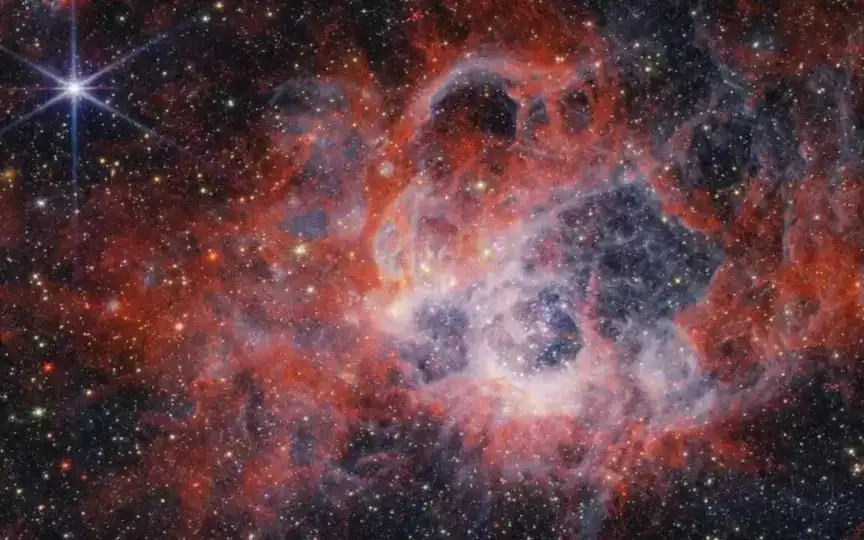NASA’s James Webb Space Telescope captures image of NGC 604, revealing secrets of star formation
Scientists are intrigued by the tumultuous and captivating environments where stars are born, and are eager to learn more about the processes involved. Leading the way in this research is NASA’s James Webb Space Telescope, which has revolutionized astronomers’ ability to observe these celestial phenomena since its launch.
Recently, the James Webb Space Telescope captured two stunning images of NGC 604, a star-forming site in the Triangulum Galaxy. It is about 2.73 million light years from Earth. These images show us bubbles and long filaments of gas where stars form.
NGC 604 contains more than 200 very hot and massive stars. These stars, called B and O types, are rare in our cosmic region. There is nowhere quite like NGC 604 in our own Milky Way. Because NGC 604 is close to us and full of massive stars, it is a great place for scientists to study these stars as they begin their lives.
In one image from the James Webb Space Telescope, we see red tentacles and clumps of gas. These are formed by the strong winds and ultraviolet radiation of young stars. They create bubbles and ignite the surrounding gas. The orange lines in the picture are made of carbon-based molecules called polycyclic aromatic hydrocarbons (PAHs). They are important in the creation of stars and planets, but it is not certain where they come from.
The second image shows us a different view of NGC 604. It has fewer stars and is more concentrated in cooler clouds of gas and dust. This helps researchers understand how these areas change over time.
NGC 604 is about 3.5 million years old and spans 1,300 light years. Studying it with the James Webb Space Telescope will provide a more detailed picture of how stars form and develop in our universe. This remarkable telescope helps solve the mysteries of the cosmos, providing insights into the complex processes of star formation and the dynamic environments in which these celestial bodies take shape.




